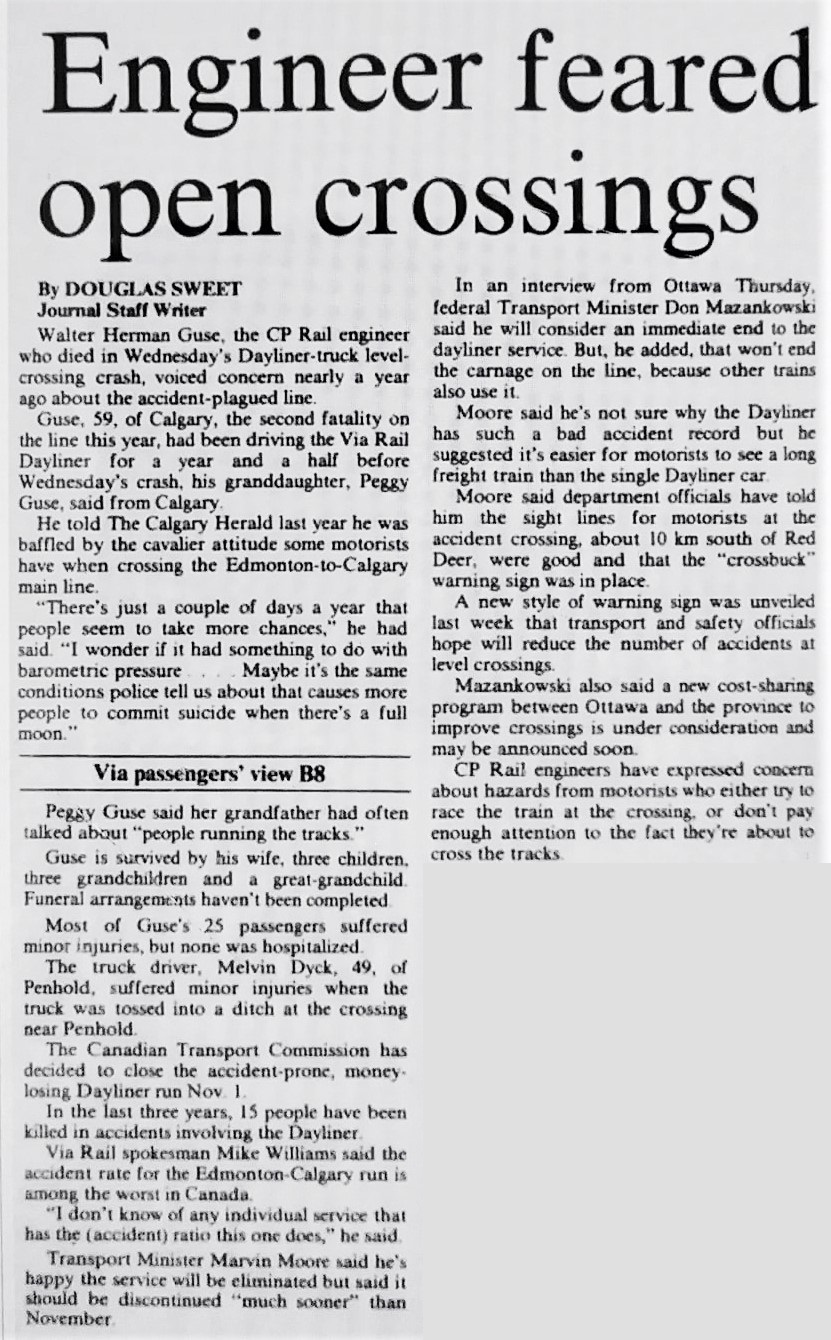No. If it’s the post, I’m thinking of the problem was you had trouble understanding the difference between revenue and profit (or loss in this case).
If you sell a glass of lemonade for $1 and it cost you $2 to make it and you sell a glass of beer for $2 and it cost you $4 to make it, which one is losing you more money? The one you sold for $1 the one you sold for $2?
Whatever I posted back then answered the wrong question: it's not about with which route (CN or CP) the Canadian would have had the lowest operating subsidy, but which routing would have allowed VIA to sustain
its entire network with the lowest subsidy. Given that I extrapolated the Canadian's current subsidy by distance covered, the CP route showed a marginally lower subsidy need, solely because it is marginally shorter.
So, you posted something inaccurate in another forum? You put up one a few years ago that showed differently.
No, he very clearly said it was a lower subsidy to run the CP route. He has always been a thorn to me. I try to be respectful. I ask things that he does not like someone asking. I have sometimes ignored him, and sometimes just scroll on by.
Do the following six questions look familiar to you?
- Do we agree that the overarching policy goal of the 1990 cuts was to minimize VIA’s deficit as much as politically and legally feasible?
- Do we agree that the length covered and the population served by the CP route is not significantly (>5%) different than for the CN route?
- Do we agree that the operating subsidy of the Canadian alone would have most probably been very similar for the CN and the CP route?
- Do we agree that the total subsidy need for keeping the Canadian on CP rather than CN west of Winnipeg would still have resulted in a slightly higher subsidy, due to the need to extend the Skeena to Edmonton?
- Do we agree that the total subsidy need for keeping the Canadian on CP rather than CN east of Winnipeg would still have resulted in a significantly higher subsidy, due to the supplementary remote service on CN being much longer and costlier to operate than on CP?
- Do we agree that the total subsidy need for keeping the Canadian on CP rather than CN (east and west of Winnipeg) would still have resulted in a significantly higher subsidy, due to the necessary expansions of the remote services mentioned above?
Because I wrote them to you almost four years ago and yet they describe exactly what I wrote to you in my last post and many, many dozen times before, despite you pretending to having read it for the first time:
So maybe, just maybe, if you hadn't put your fingers in your ears and sang like a toddler (or: "sometimes ignored [me], and sometimes just scroll on by", as you euphemistically put it in your own words) every time I increasingly impatiently and exasperatingly explained this to you, I would still feel any inclination to treat you with respect.
But since only me insulting you seems to have motivated you to finally read and acknowledge my debunking of your stupid Mulroney-hated-the-CP conspiracy rather than just vomiting it out again and again at every possible occasion, I would just recommend everyone else here to also spice up their responses to you with whatever insults and abuse they can think of. The responses they would get from you as results can't possibly be worse than what they got when they still treated you as if it was actually possible to have adult-level discussions with you. And in any case: you certainly wouldn't deserve any better...
Have a good night, everyone, and may the sun never rise over Sudbury again!





